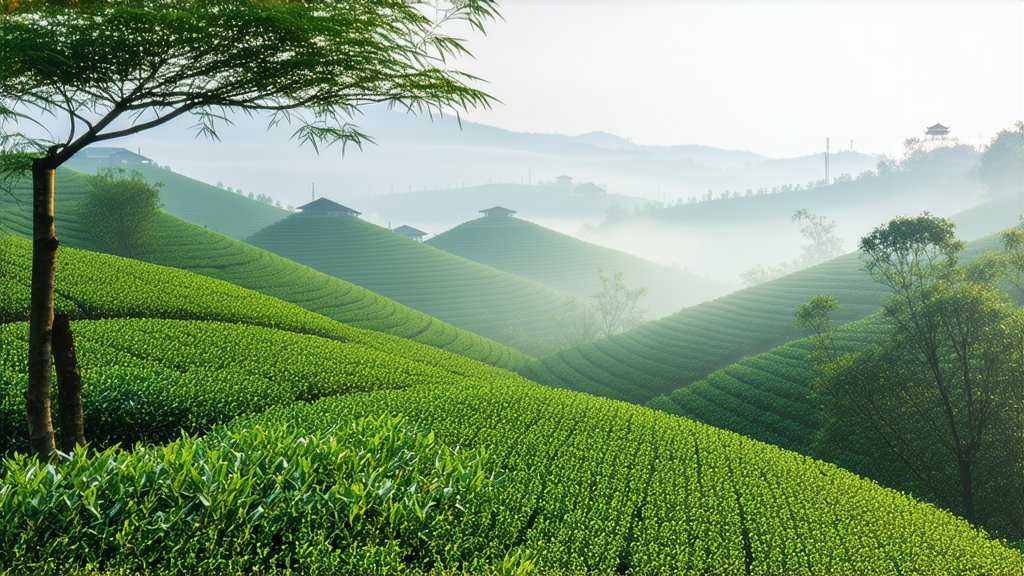
The verdant hills of Hangzhou, nestled alongside the picturesque West Lake, have long been synonymous with one of China's most revered teas—Longjing, or Dragon Well tea. This exquisite green tea, whose name translates to "Dragon Well," is not merely a beverage but an experience that encapsulates centuries of Chinese tea culture and tradition. With its slender, jade-green leaves and delicate aroma, Longjing stands as a testament to the artistry and precision inherent in Chinese tea production.
Historical Roots
The origins of Longjing tea can be traced back over 1,200 years to the Tang Dynasty (618–907 AD). However, it was during the Qing Dynasty (1644–1912) that this tea gained widespread acclaim, particularly after Emperor Kangxi of the Qing Dynasty visited the West Lake region and was presented with the finest local teas. Since then, Longjing has been celebrated as the "Granary of Fish and Rice" and the "Home of Silk and Tea," earning its prestigious reputation as one of China's top-quality teas.
Varieties of Longjing
Longjing tea comes in several grades, primarily determined by the time of harvest and the quality of the leaves. The highest grades are known for their flat, sword-like shape and vibrant green color. These premium grades are often handpicked from specific regions around West Lake, such as Shi Feng Village, which is considered the birthplace of Longjing tea. Lower grades may come from other parts of Zhejiang province but still maintain the distinctive characteristics of Longjing.
The Art of Crafting Longjing
The meticulous process of producing Longjing tea involves several stages, each requiring skill and precision. It begins with the careful selection of tender buds and leaves, usually plucked during the early spring when the first flush of growth occurs. This period ensures that the leaves contain the optimal balance of nutrients and flavors.
Once harvested, the leaves undergo a series of steps:
-
Pan-Frying: Unlike other green teas that may be steamed or sun-dried, Longjing is uniquely pan-fried. This process helps to halt oxidation and preserve the tea's fresh, green flavor. The leaves are tossed continuously in a wok over high heat to prevent burning while allowing them to dry slowly.
-
Shaping: As the leaves begin to soften, skilled artisans press and roll them into their characteristic flat shape. This shaping process requires deft hands and a keen eye to ensure uniformity and aesthetic appeal.
-
Drying: After shaping, the leaves are further dried to remove any remaining moisture, ensuring stability and longevity. This final drying stage also enhances the tea's aromatic profile.
A Symphony of Flavors: Tasting Longjing
Tasting Longjing tea is an exercise in mindfulness and appreciation. To fully enjoy its nuances, follow these steps:
-
Warm the Teaware: Begin by warming your teapot and cups with hot water to maintain the tea's temperature.
-
Measure and Infuse: Use approximately 3 grams of Longjing per 150 ml of water. The ideal water temperature for brewing is between 75°C and 80°C (167°F to 176°F). Steep the leaves for about 2-3 minutes to allow their flavors to unfurl gently.
-
Observe: Notice the bright green hue of the liquor and the subtle, chestnut-like aroma that wafts up. Longjing's fragrance is often described as sweet, floral, and slightly vegetal.
-
Sip and Savor: Take your first sip slowly, allowing the tea to coat your palate. You'll notice a smooth, mellow taste with a hint of sweetness, followed by a refreshing aftertaste. The texture should be silky, without any astringency.
-
Multiple Infusions: Longjing tea is known for its endurance; it can be steeped multiple times, each infusion revealing new layers of flavor and complexity.
In conclusion, Longjing tea is more than just a drink; it embodies the essence of Chinese tea culture—a blend of history, art, and nature. From its ancient roots to its modern-day popularity, Longjing continues to captivate tea enthusiasts worldwide with its unique character and exquisite taste. Whether you're a seasoned connoisseur or a curious beginner, exploring the world of Longjing tea promises a journey filled with discovery and delight.